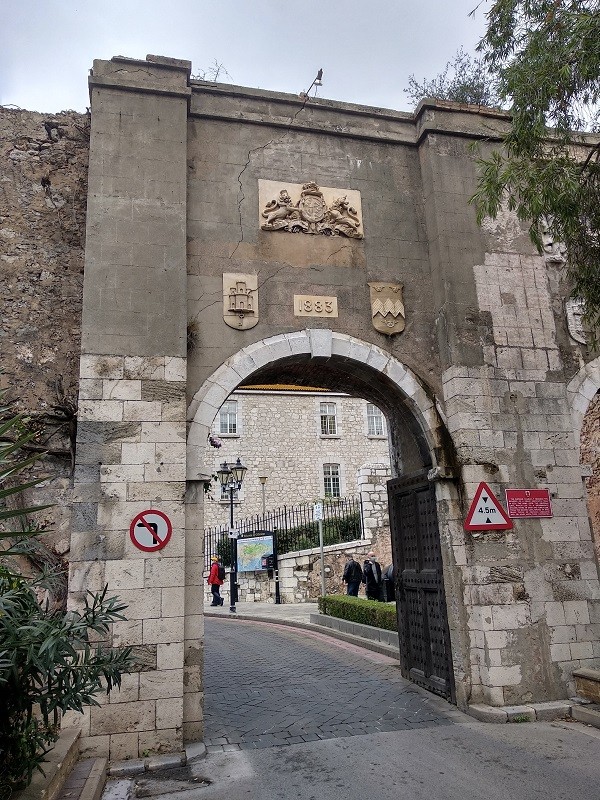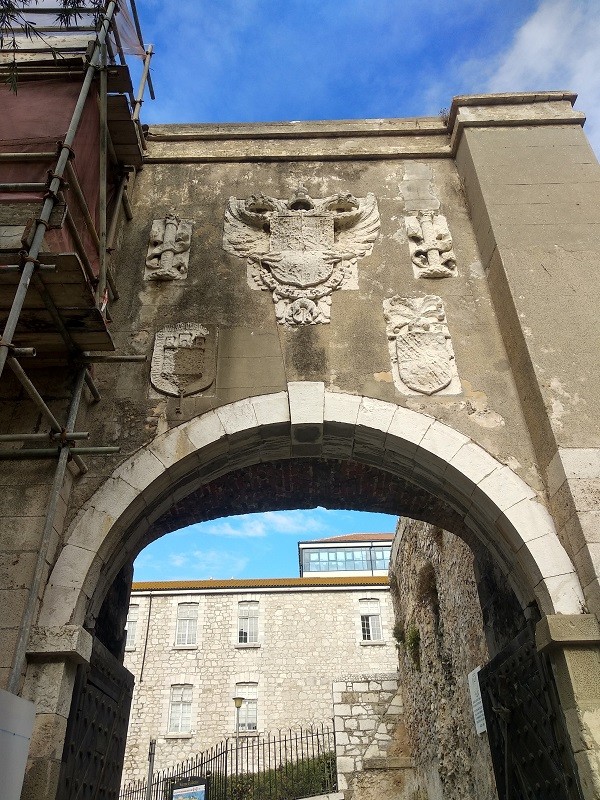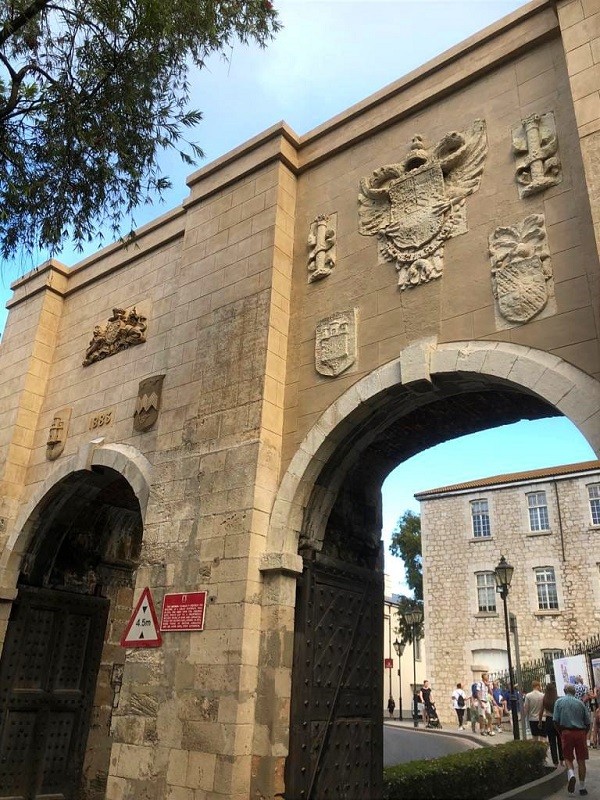Southport Gates Restored
As part of an on-going programme of works aimed at restoring Gibraltar’s Heritage, the Ministry for Heritage has undertaken a complete restoration of Southport Gates. These works have been approved by the Heritage and Antiquities Advisory Board and have been led by the Gibraltar National Museum restorer Manuel Jaen, supported by Tony Monday and Andy White of Electricon Ltd.
Conservation and restoration work was carried out following the guidelines and recommendations contained in the various International Restoration Charters on the protection, conservation and safeguarding of works of art.
These include a respect for the integrity of the monument, both in its material sense and in its historical and aesthetic importance. The use of reversible materials which are compatible with the original fabric as well as the distinction of the treated areas in relation to this original fabric is of fundamental importance in any restoration work.
Given that the restoration has included the dismantling of sections of a pillar and a part of the wall, the work has been carried out after listing and referencing each of the different elements (ashlars, masonry, bricks, and so on), for their subsequent reassembly in their exact location.
Beyond this highly specialised and complex undertaken, the immediate area has also been enhanced with further repairs and four new interpretation panels have been placed highlighting the history of the monument.
The team involved in the project consisted of the Government Archaeologist Dominic Lopez, Manuel Jaen, from the Gibraltar National Museum, Tony Monday and Andy White from Electricon Ltd as well as their Director Simon Vaughn for providing us with all the support we needed throughout the works and also Situs and Jofil Construction Ltd.
Caretaker Minister for Heritage John Cortes commented, “The restoration of another heritage asset continues our policy of investing in small scale but highly valuable projects that enhance and develop what we have on offer. Yet again, we have found a way to beautify a site that had been neglected for decades. I would like to take this opportunity to thank the entire team involved”.
Southport Gates before restoration


Southport Gates after restoration

Additional information - Details of Restoration work
The restoration has included:
- Elimination of roots that acted as agents of deterioration;
- Partial disassembly of the left pillar of the 1883 gate;
- Partial dismantling of the wall above the arch of the 1883 gate;
- Dismantling of the Gibraltar shield that was fractured;
- Dismantling of Queen Victoria's coat-of-arms;
- Removal of plasters and mortars necessary for the dismantling of the pillar and the wall;
- Cleaning and application of a herbicidal treatment;
- Assembly of the wall, pillar and dismantled shields;
- Cleaning, consolidation and restoration of shields;
- Rendering with lime mortar of the pillar and the wall, including an incised drawing imitating stone ashlars, just as had originally been done;
- * Chromatic reintegration of the new renders, toning these to the colour of the original stone, in a similar manner that was originally carried out on the Africa Gate, and that is still visible today in the remains preserved in the Southport Gates complex;
- ** Application of a water-repellent agent to the entire assembly.
During the course of the work, it was discovered that the roots of the trees had spread throughout the interior of the structure and were also affecting, although to a lesser extent, the right pillar of the 1883 gate (i.e. the left pillar of the Africa Gate) and the upper part of the wall above the old Africa Gate.
It was therefore decided to extend the work to the affected area and to include the restoration of the wall over the Africa Gate, for two main reasons.
First, given the poor state of conservation of the coats of arms of Charles V (double-headed eagle with the imperial crown and the two pillars of Hercules), that of Gibraltar and that of the governor or warden of Gibraltar, and secondly, the regrettable state of conservation and aesthetics of the wall, which bore a multitude of modifications and repairs over time.
The wall showed different types of rendering, distributed over its entire surface, which had become detached in some areas, and which were each composed of different materials, textures and colours (mainly with grey construction cement, the use of which is banned in the conservation of traditional buildings and historical monuments, due to the incompatibility and the damage it causes to the original lime-based mortars).
All this, together with the progressive degradation of the wall due to the passage of time and exposure to pollution from road traffic, gave an image that was degraded and distorted from its original appearance.
For these reasons, it was decided to restore the wall to its original appearance, and include in the restoration the area of the two doors and the three pillars.
The following actions were carried out in the course of the restoration of said wall:
- Cleaning and removal of modern mortar on the original surface, and on old repairs;
- Delimitation of the original areas;
- Consolidation of original mortars;
- Consolidation of missing parts and repaired areas;
- Reintegration with lime mortar of voids and degraded areas;
- * Chromatic reintegration of the new renders, toned to the colour of the original stone, in a similar manner that was originally carried out on the Gate of Africa and that is still visible today in the remains preserved in the Southport Gates complex;
- ** Application of water-repellent agent to the entire assembly.
With regard to the shields:
- Cleaning and removal of modern repairs;
- Application of fungicide treatment to eliminate fungi and lichens;
- Removal of dark concretions and calcifications;
- Consolidation of the surfaces;
- Reintegration of gaps;
- Final water-repellent protection.
Published: October 02, 2023
Other similar News
News
The #IceAgeEuropenow touring photographic exhibition arrives in Gibraltar
Published: March 16, 2019
18-20 Bomb House Lane
PO Box 939,
Gibraltar
